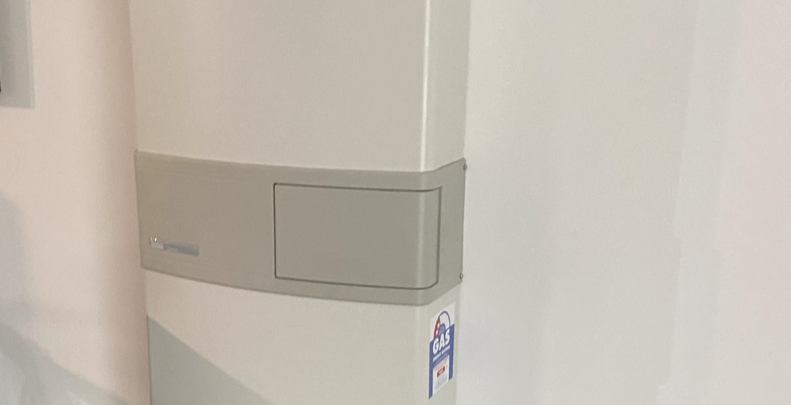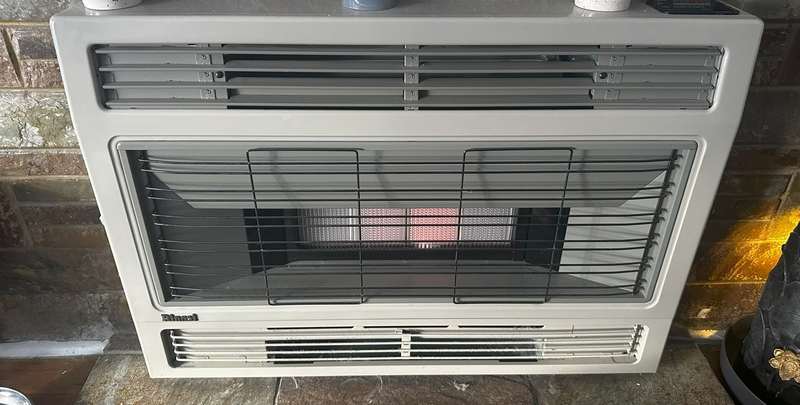
Types of Gas Room Heaters: Choosing the Right One for Your Space
As winter rolls in and temperatures drop, many households in Australia and beyond search for a suitable heating solution to keep their homes cosy and comfortable.
Gas room heaters have gained popularity among the range of heating options available due to their energy efficiency and warmth.
One of the best ranges of gas heaters is the one that comes from Rinnai. With the brand’s array of gas heating options, it can be daunting to identify the right heater for your space. This article will guide you in choosing from different types of gas heaters, including flued gas heaters, unflued gas heaters, and gas log fires.
Flued Gas Heaters
Flued or vented gas heaters lead their combustion products outside via a flue or a chimney. The major benefit of this type of heater is that it reduces the risk of indoor air pollution. They are best suited for whole-house heating and ideal for family rooms or large open spaces.
Flued gas heaters are divided into natural gas and LPG (liquefied petroleum gas) heaters. Natural gas heaters are typically connected to a mains supply, while LPG heaters use liquid propane gas. The choice between these models will be dictated by the available fuel supply in your area.
It’s essential to have your flued gas heater serviced regularly. Maintenance ensures that the flue remains unblocked and reduces the risk of carbon monoxide build-up. Always look for certified professionals to service or replace your heaters. In Victoria, only a licensed gasfitter is allowed to carry out such services.
Unflued Gas Heaters
Unflued gas or vent-free heaters are portable and do not require a flue or chimney for installation. This makes them ideal for renters or those who require heating in rooms with no existing vents.
Despite their compact design and ease of installation, an unflued gas heater requires careful use. As they release combustion products directly into the room, adequate ventilation is essential to prevent carbon monoxide buildup. Most modern unflued gas heaters have safety features to minimise this risk, such as an oxygen depletion sensor that will shut off the heater if oxygen levels drop too low.
Unflued gas heaters can be used to heat small rooms effectively. However, due to restrictions to ventilation requirements, they may not be suitable for bedrooms or rooms with limited ventilation.
Gas Log Fires
If you love the charm of a traditional fireplace but not the mess and maintenance, gas log fires are the answer. These heaters mimic the appearance of a wood-burning fire, providing your space with a cosy ambience. Moreover, they offer the benefits of gas heating, including energy efficiency and reduced running costs.
Gas fires can be flued or unflued, with flued models having higher energy efficiency. It’s essential to have your gas log fire heater serviced regularly to ensure it operates at its best.
Another advantage of a gas log fire is that it can be installed in an existing fireplace.
Gas Heater Two Main Styles: Wall Furnaces vs Space Heaters
Deciding on the right gas heater can be challenging, especially considering the two main styles: wall furnaces and space heaters. Let’s dive into their key differences, benefits, and potential drawbacks.
Wall Furnaces
As the name suggests, wall furnaces are mounted into your home’s wall. These heaters are designed to heat larger spaces or even entire homes, depending on the layout of the walls, your floor plan and the heater’s capacity.
The primary advantage of wall furnaces is their ability to provide continuous and consistent heat over a larger area. They can be an excellent option for those looking to heat their whole house or substantial portions of it, with the furnace’s fan ensuring heat distribution to adjacent rooms.
Wall furnaces usually require a flue system to vent out combustion fumes to the outdoors, reducing the risk of carbon monoxide build-up in the home. Depending on your available fuel supply, they come in natural gas and LPG options.
One potential drawback of wall furnaces is the installation process, which is more complex than space heaters. It may involve considerable modification to your wall and should be carried out by a professional installer. However, once installed, they offer a seamless and unobtrusive heating solution.
Space Heaters
On the other hand, space heaters are freestanding units that can be moved around to different areas as required. They come in both flued and unflued versions, with flued space heaters requiring a flue or chimney to vent fumes outside, while unflued heaters expel hot combustion products directly into the room.
Space heaters are an excellent choice for heating smaller spaces or specific areas in your home. They are particularly useful in homes where installing a wall furnace may not be practical or desired. Being portable, they offer a range of flexibility and can be taken along if you rent and move to a different place.
Regarding energy efficiency, space heaters can be just as efficient as wall furnaces, with modern models featuring energy-saving modes and thermostatic controls. However, they may struggle to heat larger areas as effectively as wall furnaces.
One thing to be mindful of when using unflued space heaters is ventilation. These heaters can produce combustion fumes, including water vapour and carbon monoxide, which are released into the room. Therefore, adequate ventilation is necessary to maintain safe indoor air quality.

Selecting the Best Gas Heater for Your Space
When selecting a gas heater, consider these factors in finding the most suitable gas appliances for your home.
- Determine your space requirements: The size of your space will dictate the capacity of the gas heater you need. Large rooms or whole-house heating may require a more powerful, flued gas heater, while smaller rooms can be efficiently heated with portable, unflued heaters.
- Consider your ventilation: Unflued gas heaters require good ventilation to prevent the build-up of carbon monoxide and other combustion products. Ensure your room has sufficient ventilation before opting for an unflued heater.
- Evaluate your energy efficiency needs: Look for gas heaters with high star ratings, which are more energy-efficient. This not only helps the environment but can also reduce your heating bills.
- Assess your fuel supply: A natural gas heater might be your best option if your house is connected to a mains gas supply. If not, an LPG (or bottled gas) heater can be a good alternative.
- Check safety features: Look for gas heaters with safety features, such as a cut-off switch that automatically turns off the heater if it overheats or the oxygen levels in the room fall too low.
- Consider installation requirements: Some gas heaters may require professional installation, particularly if they need to be connected to a gas supply or require a flue or chimney. Consider these factors when selecting your heater.
- Factor in maintenance and servicing: Regular servicing is essential to keep your heater in optimal condition and prevent safety risks. Choose a heater with a service schedule you can manage and stick to.
- Think about aesthetics: If the look of your heater is important, consider options like gas log fires, which provide the cosy ambience of a wood fire without the associated mess or maintenance.
- Compare running costs: Finally, compare the running costs of different heaters. While some may have a higher upfront cost, they could be more cost-effective in the long run due to lower running costs.
Remember, the best gas heater for you will balance efficiency, safety, and comfort to create a warm, cosy space in your home.
Find the Perfect Warmth with the Ideal Gas Room Heater
When choosing the right gas room heater for your space, carefully considering your specific needs and requirements is crucial. The wide range of options, including flued gas heaters, unflued gas heaters, and gas log fires, offers various benefits and features to cater to diverse heating preferences.
If you prioritize efficient whole-house heating and reduced indoor air pollution, flued gas heaters, particularly those from Rinnai, are a reliable choice. However, it’s essential to ensure regular servicing by licensed professionals to maintain optimal performance and safety.
For those seeking flexibility and ease of installation, unflued gas heaters may be ideal, especially in smaller spaces or rooms without existing vents. Remember to prioritize ventilation to prevent potential risks associated with carbon monoxide buildup.
Gas log fires offer a charming and cosy alternative for those who desire the ambiance of a traditional fireplace without the hassle of maintenance whether flued or unflued, gas log fires can efficiently heat your space while being mindful of regular servicing requirements.
When deciding, consider your space requirements, ventilation, energy efficiency needs, fuel supply, safety features, installation requirements, maintenance considerations, and aesthetics. By weighing these factors and comparing running costs, you can find the perfect gas room heater that balances efficiency, safety, and comfort, ensuring your home’s warm and inviting atmosphere throughout the winter.
For the best range of gas room heaters, including options with features like split systems, a pilot light, and remote control, consider exploring the offerings from Metropolitan Heating and Cooling. We provide top-quality products, reliable spare parts, and exceptional customer service to help you find the ideal gas heater to suit your needs and warm your space during the colder months. Contact us today.
Please note: This information is provided for advice purposes only. Regulations differ from state to state, so please consult your local authorities or an industry professional before proceeding with any work. See our Terms & Conditions here.
Published: 14 August 2023
